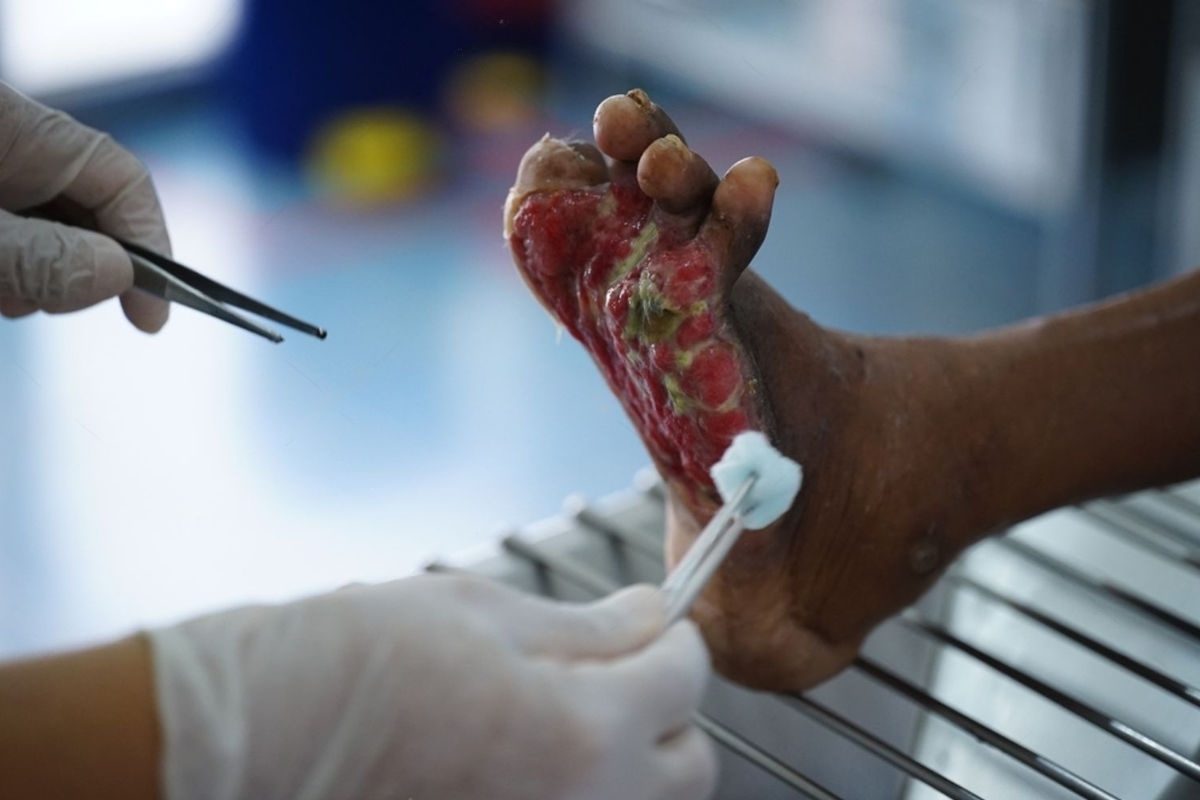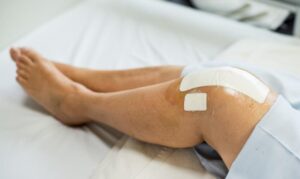Diabetic foot ulcers are a serious and common complication for people living with diabetes. These painful and often debilitating wounds can lead to infection, tissue damage, and, in severe cases, amputation. Fortunately, orthopedic treatment plays a crucial role in managing these ulcers, promoting healing, and preventing further complications. In this blog, we’ll explore the importance of orthopedic treatment for diabetic foot ulcers and effective strategies for healing and prevention.
What are Foot Ulcers and How Does Diabetes Contribute?
Foot ulcers are open sores or wounds that typically develop on the feet of individuals with diabetes, often in areas that are subjected to pressure or friction. These ulcers are more than just a cosmetic concern; they can lead to severe infections and, if untreated, permanent damage.
Diabetes contributes to the development of foot ulcers in several ways. First, poor circulation, a common issue in diabetic patients, reduces the flow of blood to the feet, hindering the body’s ability to heal wounds. Second, nerve damage (diabetic neuropathy) caused by elevated blood sugar levels can lead to a loss of feeling in the feet, preventing individuals from noticing injuries or ulcers early on. As a result, small wounds can go unnoticed, worsening over time and leading to ulcers.
Why Orthopedic Treatment is Critical for Foot Ulcers
Orthopedic treatment is essential for individuals with diabetic foot ulcers due to the complexity of the condition. Diabetic foot ulcers are not just a surface-level issue; they can lead to deep infections that affect bones and soft tissue. Orthopedic interventions help prevent complications, reduce pain, and enhance mobility by addressing the root causes of the ulcer formation.
Orthopedic care focuses on infection management, tissue preservation, and improving mobility, all of which are essential to preventing further health risks, such as amputation. Proper management through orthopedic treatment also helps speed up healing by ensuring the proper alignment and pressure distribution on the feet, reducing further stress on the affected area.
Key Orthopedic Treatments for Diabetic Foot Ulcers
When dealing with diabetic foot ulcers, the goal of orthopedic treatment is to heal the ulcer, reduce the risk of infection, and preserve the affected tissue. Here are the main orthopedic treatments commonly used:
Infection Management: Diabetic foot ulcers are prone to infection due to poor circulation and nerve damage. Orthopedic care focuses on ensuring proper wound care and, when necessary, administering antibiotics to prevent infection from spreading. Timely intervention is crucial to avoid severe complications.
Tissue Preservation: Preserving as much healthy tissue as possible is vital to maintaining foot function. Advanced technologies like wound debridement and specialized dressings are used to remove dead tissue, promote healing, and protect healthy tissue.
Wound Healing Strategies: Orthopedic treatments for diabetic foot ulcers may include using advanced dressings, bandages, or topical treatments that encourage healing and prevent further breakdown of the skin.
Surgical Intervention: In more severe cases, when ulcers do not heal with conservative treatments, surgery may be necessary to remove infected tissue or repair damaged structures. This ensures that the foot remains functional and avoids more serious complications.
How Orthotics and Proper Footwear Can Improve Healing
Orthotics and proper footwear are critical components of Orthopedic Treatment for Diabetic Foot Disease. Ill-fitting shoes or inadequate support can place unnecessary pressure on the feet, making ulcers worse or causing new injuries. Custom orthotics, such as insoles or shoe inserts, help redistribute pressure across the foot, reducing the chance of further ulcer formation.
Proper footwear, designed to accommodate foot deformities and provide ample cushioning, can also prevent additional damage and aid in the healing process. These specialized shoes reduce friction, support the foot’s natural shape, and ensure the feet are protected from external forces that could exacerbate the ulcer.
The Importance of Early Detection and Ongoing Care
Early detection and continuous care are essential to successfully managing diabetic foot ulcers. If ulcers are caught in their early stages, treatment options are more effective, and the risk of complications such as infection is significantly reduced.
Regular check-ups with an orthopedic specialist are important for monitoring the health of the feet and ensuring any potential issues are addressed promptly. Ongoing care may include regular dressing changes, pressure relief treatments, and guidance on proper foot hygiene. By committing to regular visits and adhering to treatment plans, patients can significantly reduce the likelihood of foot ulcers reappearing.
The Role of Lifestyle Changes in Diabetic Foot Health
Lifestyle changes are a key component of managing diabetic foot ulcers and preventing them from forming in the first place. Individuals with diabetes must focus on controlling their blood sugar levels to minimize the risk of nerve damage and poor circulation, two major contributors to foot ulcers.
Additionally, adopting proper foot care practices, such as inspecting the feet daily for cuts or blisters, wearing protective footwear, and keeping the feet clean and dry, can go a long way in preventing the development of ulcers. Nutrition also plays a role in healing and overall foot health, as adequate protein intake and proper hydration support the body’s ability to heal wounds.
Takeaway
Orthopedic treatment plays a pivotal role in managing diabetic foot ulcers by addressing infection, preserving tissue, and promoting healing. Through a combination of early detection, specialized care, proper footwear, and lifestyle changes, individuals with diabetes can significantly reduce their risk of complications and improve their overall foot health.
If you or a loved one is struggling with diabetic foot ulcers, seek professional care to ensure you receive the best possible treatment. With the right approach, healing is possible, and you can regain mobility and improve your quality of life.






